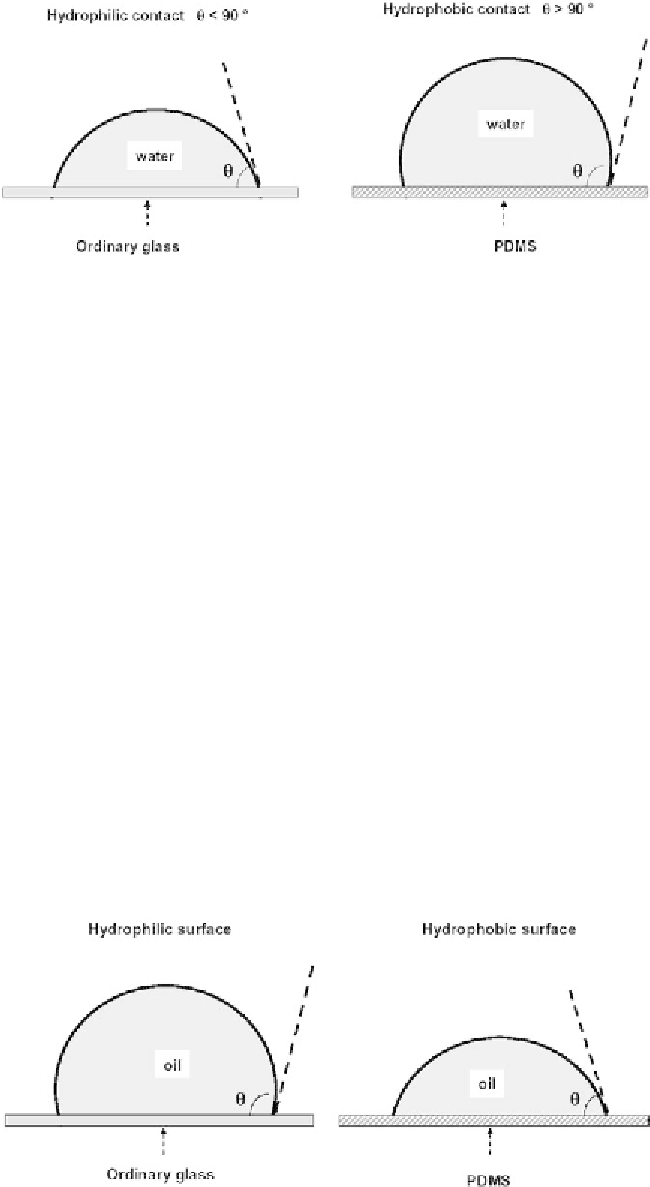Biomedical Engineering Reference
In-Depth Information
Figure 3.19
Water spreads differently on different substrate.
soap between the frame and the tube by plunging one side of the structure in a water-
soap solution, the tube starts to move towards the region where there is a liquid
film. The surface tension of the liquid film exerts a force on its free boundary.
On the other hand, we can increase the film surface by exerting a force on the
tube. The work of this force is given by the relation
δ
W F dx
=
=
2
γ
Ldx
(3.23)
The coefficient 2 stems from the fact that there are two interfaces between the
liquid and the air. This relation shows that the surface tension
g
is a force per unit
length, perpendicular to the tube, in the plane of the liquid and directed towards
the liquid.
By extension, we can draw the different forces that are exerted by the presence
of a fluid on the triple line (Figure 3.22).
At equilibrium, the resultant of the forces must be zero. We use a coordinate
system where the
x
-axis is the tangent to the solid surface at the contact line (hori-
zontal) and the
y
-axis is the direction perpendicular (vertical). At equilibrium, the
projection of the resultant on the
x
-axis is zero and we obtain the relation
γ
cos
θ γ γ
=
-
(3.24)
LG
SG
SL
Figure 3.20
Silicone oil has an opposite wetting behavior than water.


